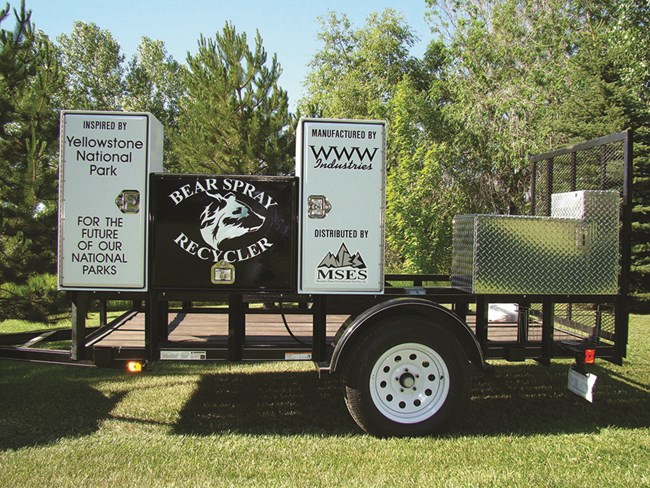Last updated: April 19, 2019
Article
Bear Spray Canister Recycling

For many years, federal land agencies within the greater Yellowstone area noted as many as 1,000 canisters a year entering into waste streams. After exhaustive attempts to find any recycling center in the country that had a solution to this issue, it became clear that no device existed to safely process discarded bear spray canisters and mace containers used by law enforcement officers.
In 2008, the Gallatin National Forest initiated a research project to address the danger and environmental impact of pressurized bear spray canisters ending up in landfills. This research turned into a collaborative effort between Gallatin NF, Yellowstone National Park, and the Wyoming Department of Environmental Quality to prototype a solution. Ultimately, that solution came from three Montana State University engineering students, who designed a machine that removes the pepper oil and the propellant into collection containers to be used as heating fuel, and crushes the canister, preparing it for recycling as high-quality aluminum.
In 2011, Yellowstone and its partners began to collect bear spray containers for recycling. Collection sites throughout the region, and from Teton and Glacier national parks contributed more than 3,200 discarded and expired canisters by March 2014.
Some equipment breakdowns have delayed the recycling process for these canisters. However, the park continues to collect them and park staff members are working with Montana State University engineers to redesign and improve the machines in order to resolve the backlog.
Steps to Process Bear Spray Canisters
- Tops are removed using a homemade, bottle opener type tool supplied by MSES.
- Canisters are drained in the protected ‘draining station’ on the BSR. An injector tube vacuums the contents and separates the propellant and pepper oil. The Freon compressor creates the vacuum and distributes the propellant and pepper oil to the respective waste holding tanks.
- The waste holding tanks are monitored and pepper oil is emptied at the end of each shift into a plastic bucket.
- Canisters are individually dropped into the protected crushing chamber, through a feeding tube.
- The operator holds down a green switch while the crusher runs a complete cycle.
- Flattened canisters drop through a slot into the catch-bin on the bed of the trailer.
- The crushed canisters are stored in trash cans and are ready to be recycled as scrap aluminum. The plastic tops go into the plastic recycle bins. Pepper oil is dumped into the waste oil reservoir at the park’s Garage, to be recycled, and the propellant goes to the park’s Plumbing Shop for proper disposal.
